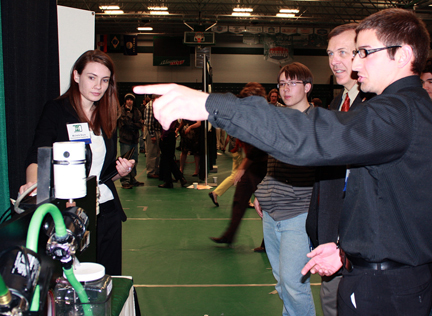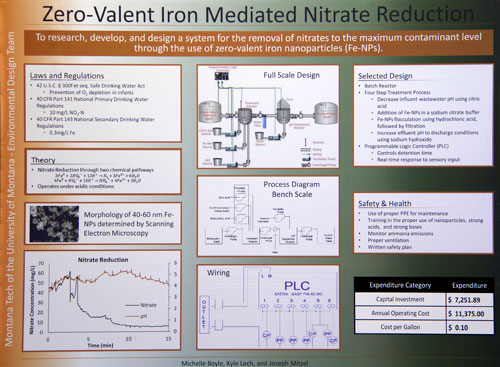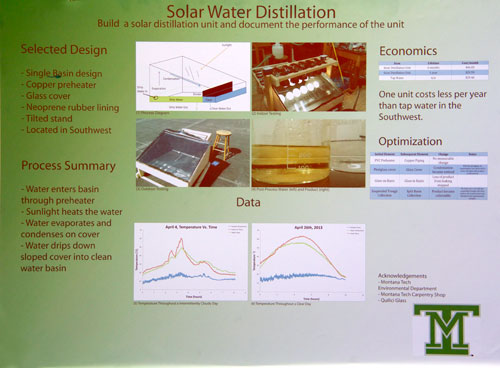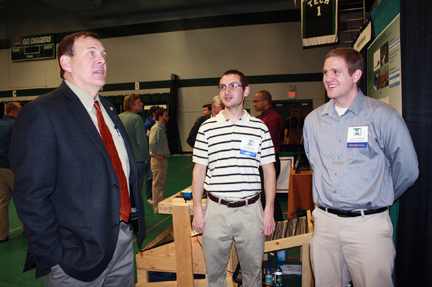2013 Environmental Engineering Design Team - Montana Tech
Congratulations to Best Technical Presentation & Best in Environmental Engineering
Project 1

Zero Valent Iron Mediated Nitrate Reduction presented by Michelle Boyle, Kyle Loch and Joseph Mitzel

This project involved developing an innovative method of treating nitrates in drinking water using zero-valent iron nanoparticles (Fe-NPs). Fe-NPs, in a slightly acidic solution, reduce nitrates to nitrogen gas and ammonium. The unspent particles can then be captured by flocculating them using hydrochloric acid. Flocculation is when nanoparticles coagulate; the coagulated particles can then be captured on a filter. The designed system showed that Fe-NPs can be used effectively in denitrification processes and can treat large concentrations and flows. Some disadvantages of this system are the cost, which is expensive compared to alternative denitrification technologies due to the amount of chemical required and the lack of research performed on nanoparticles.
Project 2

Solar Water Distillation Unit presented by Jermaine Coffman, Laura Jenkins and Rowan Sauer

Solar distillation is the use of the sun’s energy to gain clean water. The single basin design had dirty water stored in one basin and clean water collected in the downslope basin. The water was warmed and evaporated onto a pane of glass, leaving impurities behind. This single basin design used incandescent light bulbs indoors to simulate the sun. They also incorporated a preheater which was used to heat the water before entering the basin. The system yielded 5,425 mL/m2/day, comparable to more complex designs researched in Malaysia.
Project 3

Engineering and Economic Analysis of Philipsburg's Water System presented by Nick Barrantes, Eugenia Barry and Andrew Fletcher
The Town of Philipsburg requested alternatives to meet the new drinking water standard that comes into effect in 2014. In order to meet this new standard, the Town has to do one of these options: add a second form of disinfection, have the water filtered, or bypass surface water completely. The Town hired a consultant and they came up with the option of UV Disinfection; however, this option was not chosen by the Town. Therefore, three other options were reviewed by a Montana Tech team: use of groundwater, micro-filtration, and building a dual-distribution system. After weighing all the options, the best choice for Philipsburg to meet the new standards was to build a micro-filtration plant because the town can continue to use the same drinking water source and will not have to acquire a new water right for the groundwater option.
Project 4
Particulates in Butte presented by Steve Knox, Cody Koontz and Nathaniel Madison
Presented by Steve Knox, Cody Koontz and Nathaniel Madison Particulate matter of 2.5 µm (PM 2.5) concentrations in Butte exceeded the air quality standard. This study was focused to evaluate potential sources contributing to these exceedences. The sources surrounding the Greeley School monitoring site area was evaluated including wood burning devices. It was concluded that the density of wood burning devices surrounding the monitoring site was twice higher than the average for the Butte area, and therefore is a potential that local sources may overly impact the Greeley School monitoring site.